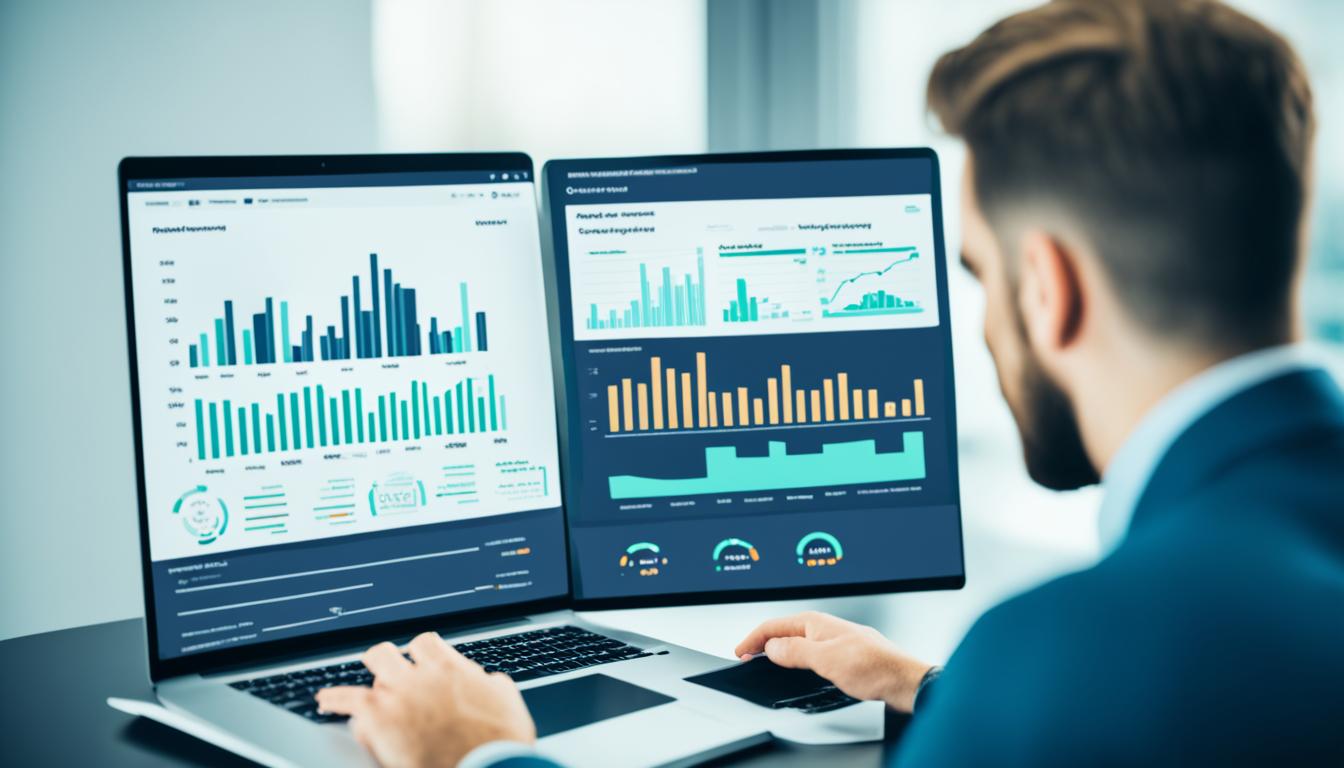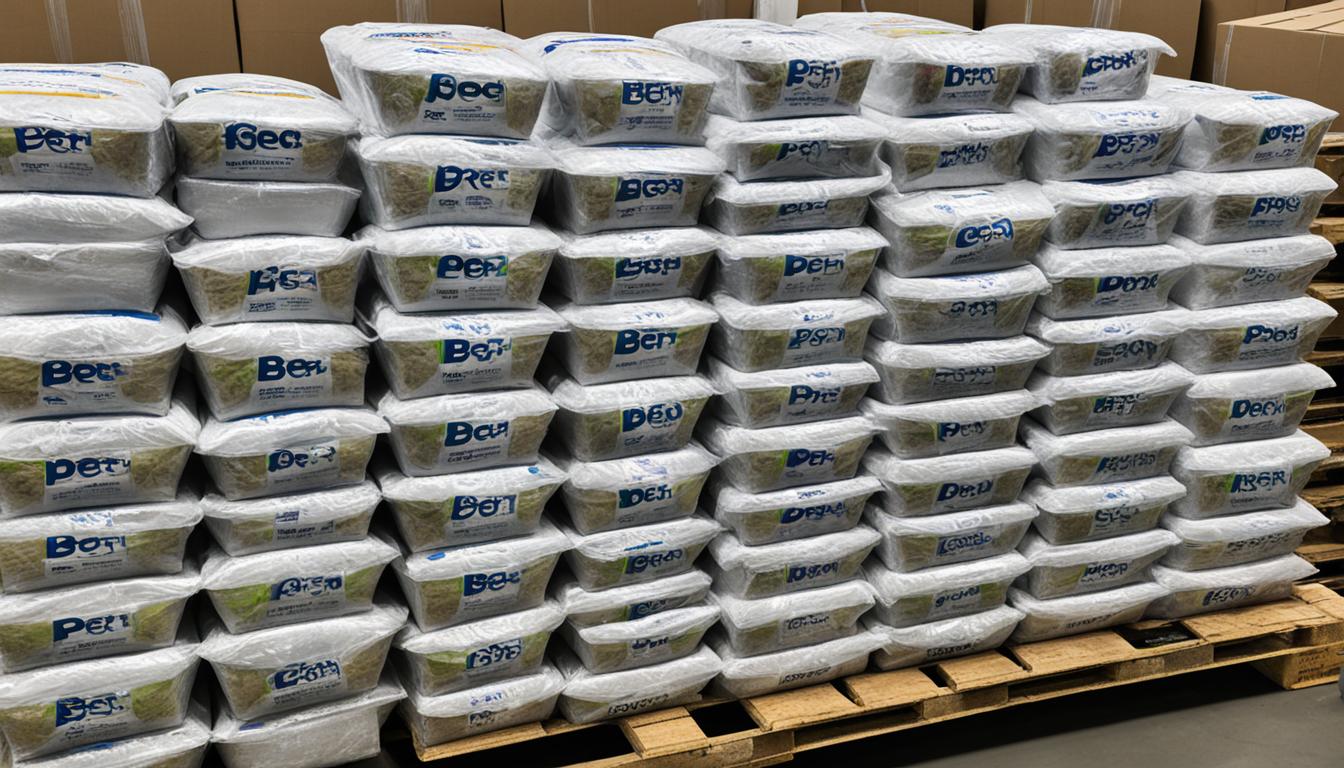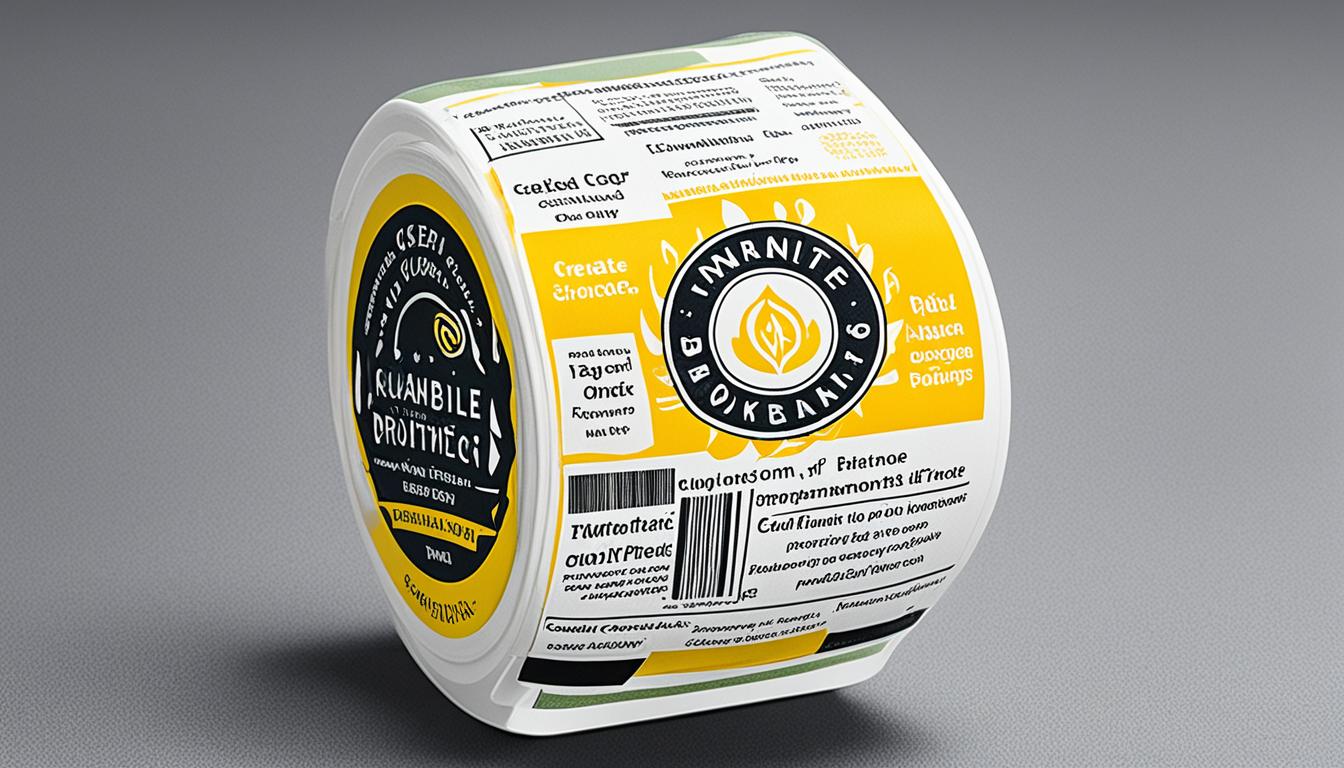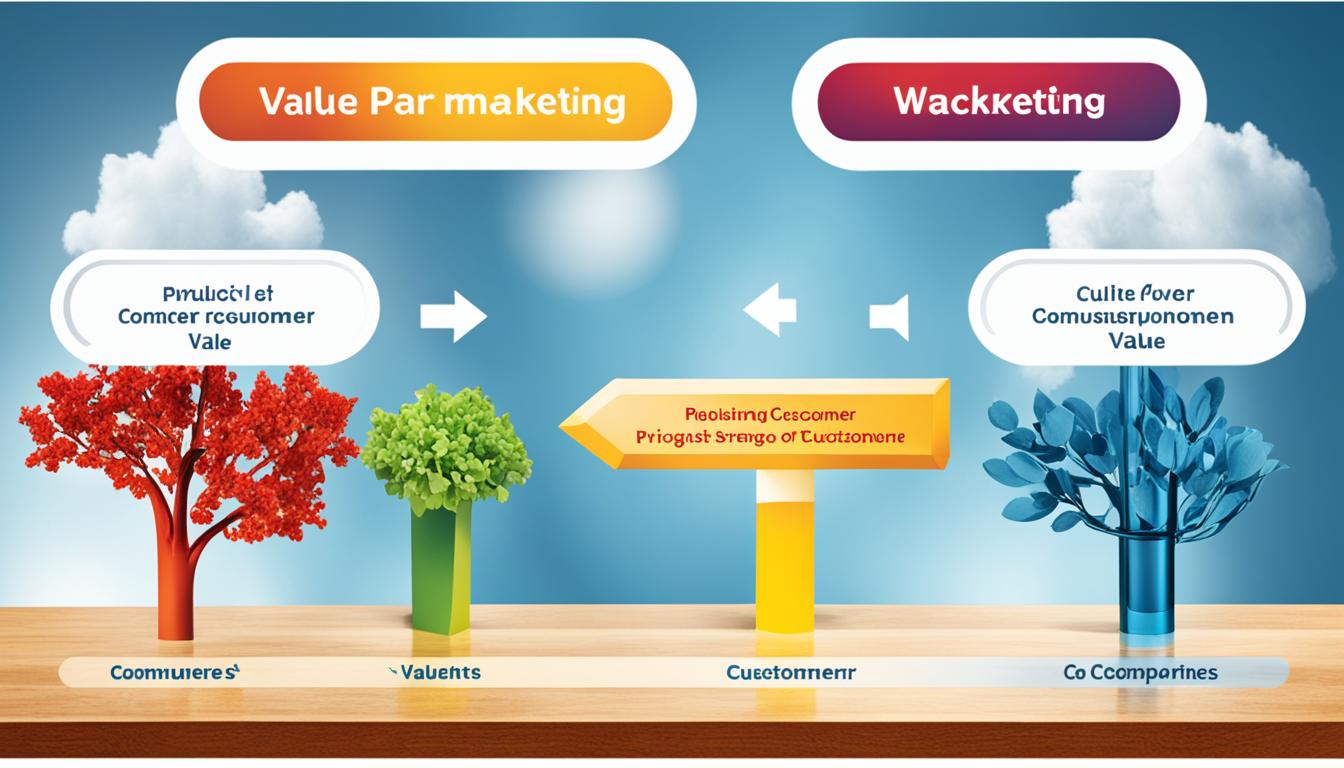Frequency marketing, also known as loyalty programs, is a promotional strategy that rewards customers for the volume or frequency of their purchases. It aims to build customer loyalty and increase sales through discounting or other promotional activities.
By implementing CRM integration, personalized offers, targeted advertising, customer segmentation, and data analytics, businesses can create effective frequency marketing campaigns. These campaigns help companies engage with their customers, encourage repeat purchases, and deliver valuable rewards. Promotional campaigns, loyalty rewards, and exclusive perks are some of the ways companies can incentivize customers to choose their brand consistently.
For successful frequency marketing, it is essential to understand customer behaviors, analyze purchasing patterns, and tailor promotions to individual preferences. By leveraging data analytics, businesses can identify the most effective strategies, optimize their campaigns, and drive customer loyalty.
Key Takeaways:
- Frequency marketing rewards customers for the volume or frequency of their purchases.
- CRM integration, personalized offers, targeted advertising, and customer segmentation are crucial for successful frequency marketing campaigns.
- Data analytics helps optimize frequency marketing strategies and tailor promotions to individual preferences.
- Promotional campaigns, loyalty rewards, and exclusive perks incentivize customers to choose a brand consistently.
- Analyzing customer behaviors and purchasing patterns enhances the effectiveness of frequency marketing initiatives.
Advantages of Frequency Marketing
Frequency marketing offers several advantages for businesses. It helps to improve customer retention by creating loyalty among customers, reducing customer churn. By retaining customers for longer periods, businesses can increase their customer lifetime value. Frequency marketing also leads to higher sales volumes as customers make repeated purchases. Additionally, it is a cost-effective strategy as retaining existing customers is less expensive than acquiring new ones.
Customer retention is a critical factor for the long-term success of any business. By implementing frequency marketing strategies, businesses can build strong relationships with their customers, making them more likely to stay and continue purchasing. This not only reduces customer churn but also increases the overall customer lifetime value.
Moreover, frequency marketing encourages higher sales volumes. When customers are incentivized to make repeated purchases through loyalty programs or discounts, they are more likely to spend more money with the business. This not only boosts immediate sales but also has a cumulative effect on the overall sales volume over time.
Furthermore, frequency marketing offers cost savings for businesses. Acquiring new customers can be a costly endeavor, involving marketing and advertising expenses. On the other hand, retaining existing customers through loyalty programs and incentives is a more cost-effective approach. By focusing on customer retention, businesses can allocate their resources more efficiently and drive higher returns on investment.
Overall, frequency marketing is an advantageous strategy that can lead to improved customer retention, increased customer lifetime value, higher sales volumes, and significant cost savings for businesses.
Disadvantages of Frequency Marketing
While frequency marketing offers various advantages, such as customer retention and higher sales volume, it also comes with several disadvantages that businesses should consider. It’s important to assess these drawbacks to ensure a balanced marketing strategy.
Customer Expectations
One of the challenges of frequency marketing is managing customer expectations. When customers participate in loyalty programs or receive frequent incentives, they may develop higher expectations for receiving freebies or discounts. This can create pressure on businesses to continually offer incentives to meet these expectations and retain customer loyalty.
Loss of Customers
Another disadvantage of frequency marketing is the potential loss of customers. If a business decides to discontinue or make changes to its loyalty program, there is a risk of losing existing customers. These customers may seek alternative options from competitors who offer similar programs, resulting in a loss of market share and customer loyalty.
Competitors’ Acquisition of Customers
When customers are dissatisfied with changes to a loyalty program or the discontinuation of incentives, competitors have an opportunity to acquire these customers. In some cases, the loss of customers can happen immediately, allowing competitors to swoop in and offer enticing alternatives. This competitor acquisition can further impact a business’s market position and customer base.
| Disadvantages of Frequency Marketing |
|---|
| Customer Expectations |
| Loss of Customers |
| Competitors’ Acquisition of Customers |
Despite these potential disadvantages, businesses can mitigate the risks by carefully managing customer expectations and continuously evaluating and adapting their frequency marketing strategies. By addressing the drawbacks while capitalizing on the advantages, businesses can optimize customer loyalty and drive long-term success.
Examples of Frequency Marketing
Frequency marketing is a powerful strategy used by businesses to incentivize customer loyalty and drive sales. Let’s explore a few examples of frequency marketing in action:
Frequent Flier Miles
Airlines often offer frequent flier miles programs, where customers earn points based on the frequency of their flights. These points can be redeemed for various rewards like free travel, flight upgrades, or exclusive perks. By rewarding customers for their loyalty, airlines can encourage repeat bookings and enhance customer satisfaction.
Retail Promotions
Many retailers implement frequency marketing through promotional campaigns. By offering discounts, rewards, or special perks for frequent purchases or reaching certain spending thresholds, retailers can incentivize customers to make repeat purchases. Retail promotions help drive customer engagement, increase sales volume, and foster long-term loyalty.
Scratch and Win Cards
In the retail industry, Scratch and Win cards are a popular way to engage customers and reward their loyalty. These cards often accompany purchases and allow customers to scratch the surface to reveal prizes, discounts, or free products. Scratch and Win cards generate excitement, create a sense of exclusivity, and encourage customers to return for future purchases.
These are just a few examples of how businesses use frequency marketing to build customer loyalty and drive sales. By implementing innovative strategies that resonate with their target audience, companies can maximize customer engagement and create lasting brand affinity.
The Importance of Reach and Frequency in Marketing
In programmatic advertising, reach and frequency play vital roles in optimizing campaigns and achieving a high return on investment (ROI). Reach refers to the number of people exposed to a specific ad, while frequency measures how many times an individual is exposed to that ad. By striking the right balance between reach and frequency, marketers can ensure maximum exposure to their target audience while preventing ad fatigue and optimizing ad spend.
Real-time data analysis allows for continuous campaign optimization, helping marketers identify the optimal advertising frequency for effective consumer engagement. With programmatic advertising, campaigns can be precisely targeted to reach the right audience at the right time, enhancing the chances of driving desired actions such as conversions or purchases.
Optimizing reach and frequency metrics enables marketers to determine the most efficient allocation of their advertising budget by identifying the most effective channels and platforms. This data-driven approach ensures that the campaign’s reach and frequency are optimized to maximize results, such as increased brand awareness, customer acquisition, or lead generation.
Quantifying ROI with Reach and Frequency
Quantifying ROI is crucial for measuring the effectiveness of marketing efforts and justifying advertising expenditures. By analyzing the reach and frequency metrics associated with specific campaign outcomes, marketers can accurately assess the impact on key performance indicators (KPIs) and determine the ROI of their programmatic advertising initiatives.
By tracking conversions, sales, or other desired actions driven by the campaign, marketers can evaluate the correlation between reach, frequency, and ROI. This allows them to allocate resources effectively, optimizing their reach and frequency strategies to achieve the highest possible ROI.
Real-time data plays a pivotal role in quantifying ROI, providing immediate insights into the performance of campaigns. Marketers can use this data to make data-driven decisions to adjust their reach and frequency parameters, ensuring that their advertising efforts align with the desired outcomes and maximize ROI.
For businesses aiming to optimize their programmatic advertising campaigns, understanding the importance of reach and frequency metrics is essential. By leveraging real-time data, marketers can fine-tune their targeting strategies, optimize their ad spend, and maximize the impact of their campaigns on the target audience.
| Benefits of optimizing reach and frequency in programmatic advertising | Considerations for optimizing reach and frequency |
|---|---|
|
|
Understanding Reach in Marketing
Reach in marketing is a crucial metric that determines the potential exposure of an advertising campaign. It refers to the number of individuals who may come across the ad during a specified timeframe. Reach represents the size of the audience reached by the marketing message, indicating the scope of its influence. However, it is important to note that reach does not guarantee that all individuals actively saw or heard the advertisement.
To achieve targeted exposure, marketers need to focus on reaching the right consumers and delivering the message to their intended audience. This requires a thorough understanding of the target market and careful planning to ensure that the ad reaches the intended audience effectively.
One effective way to reach the targeted consumers is through data-driven marketing strategies. By analyzing consumer demographics, interests, and behaviors, marketers can identify the appropriate channels and platforms to maximize the exposure of their ads to the desired audience. This ensures that the marketing message reaches individuals who are more likely to engage with the brand or make a purchase.
Moreover, personalized marketing approaches, such as behavioral targeting and segmentation, can further enhance reach by tailoring the message to specific consumer segments. By customizing the advertisement based on consumer preferences and needs, marketers can increase the chances of capturing the attention of their target audience.
It is worth noting that while reach is an essential aspect of marketing, it is just one piece of the puzzle. To maximize the effectiveness of a campaign, marketers need to consider other factors such as frequency and engagement. By striking the right balance between reach, frequency, and engagement, marketers can create impactful campaigns that resonate with their target audience and drive desired actions.
Understanding Frequency in Marketing
Frequency in marketing refers to the number of times an individual consumer is exposed to an ad during a campaign. It plays a crucial role in creating ad exposure, generating multiple touchpoints, reinforcing brand engagement, and increasing the likelihood of conversion. Research suggests that individuals need to be exposed to a brand message at least seven times before taking action.
By strategically increasing ad frequency, marketers can maximize the impact of their campaigns and drive consumer behavior. Increased exposure to ads creates multiple touchpoints that allow the brand message to reach the target audience repeatedly. This repetitive exposure helps cement brand engagement, making consumers more familiar with the brand and increasing their trust and confidence.
Importance of Ad Exposure
Ad exposure is crucial because it helps to create strong brand visibility. When consumers are repeatedly exposed to an ad, it becomes more memorable and leaves a lasting impression. The more familiar consumers are with a brand, the more likely they are to consider it and engage with it. With increased ad exposure, the brand stays top of mind, resulting in improved brand recall and recognition.
| Benefits of Increased Ad Frequency |
|---|
| Increased brand awareness and recognition |
| Enhanced brand recall |
| Greater brand trust and credibility |
| Higher likelihood of consumer action |
Multiple Touchpoints and Brand Engagement
By creating multiple touchpoints through increased ad exposure, marketers can reinforce brand engagement. When consumers encounter a brand multiple times, they have more opportunities to interact with it, whether it’s through clicking on an ad, visiting the brand’s website, or engaging with its social media content. These touchpoints contribute to building a deeper connection between the consumer and the brand, leading to increased brand loyalty and advocacy.
Moreover, multiple touchpoints allow the brand message to be communicated more effectively. Different touchpoints offer diverse ways to engage with the brand, enabling marketers to target consumers with specific messaging tailored to each touchpoint. This personalized approach enhances the overall brand experience and fosters stronger brand-consumer relationships.
Overall, understanding frequency in marketing is essential for optimizing ad exposure, creating multiple touchpoints, and driving brand engagement. By strategically increasing ad frequency, marketers can increase the likelihood of consumer action and achieve their campaign objectives.
The Relationship Between Reach and Frequency
The success of a marketing campaign relies on finding the right balance between reach and frequency. By understanding the interdependence of these factors, marketers can achieve a balanced marketing approach that delivers optimal results.
Increased Reach: Reach refers to the number of individuals who are exposed to an advertisement during a specific campaign period. Increasing reach expands the audience and brand exposure, allowing for a wider pool of potential customers. It enables businesses to capture the attention of a larger audience and increase brand awareness.
Increased Frequency: Frequency measures how many times an individual viewer is exposed to an advertisement during a campaign. Increasing frequency ensures that each viewer is repeatedly exposed to the ad, promoting brand recall and engagement. It creates multiple touchpoints with the audience, reinforcing the brand message and increasing the likelihood of conversion.
However, budget constraints often require marketers to prioritize one over the other. Determining whether to focus on reach or frequency depends on the specific goals of the campaign and the target audience’s stage in the buying journey.
A balanced marketing approach considers both reach and frequency to achieve quality exposure and a higher return on ad spend. By effectively managing the advertising budget, businesses can maximize the impact of their marketing efforts and drive better results. Balanced marketing ensures that businesses reach a wide audience while providing meaningful engagement to each viewer.
| Reach | Frequency | |
|---|---|---|
| Definition | The number of individuals exposed to an ad | The number of times an individual is exposed to an ad |
| Goal | Expand audience and brand exposure | Reinforce brand message and increase engagement |
| Importance | Increases brand awareness | Promotes brand recall and conversion |
| Optimization | Maximizing reach within the advertising budget | Strategically increasing frequency without overexposure |
| Results | Expands the potential customer base | Enhances audience engagement and conversions |
Achieving the right balance between reach and frequency requires continuous optimization and analysis. Marketers should leverage data-driven insights to refine their campaigns and allocate resources effectively. By monitoring campaign performance and adjusting the advertising strategy, businesses can ensure quality exposure that drives success in their marketing efforts.
Optimizing Reach and Frequency
To maximize the effectiveness of marketing campaigns, it is crucial for marketers to optimize reach and frequency. By implementing various techniques such as frequency capping, dayparting, and campaign modeling, marketers can enhance their targeting and engagement strategies.
Frequency Capping
One effective technique for optimizing reach and frequency is through frequency capping. This involves setting limits on the number of times an individual is exposed to an ad within a specific time period. By preventing overexposure and ad fatigue, frequency capping ensures that the message remains impactful and avoids irritating the target audience. It also helps to optimize ad spend by reducing unnecessary impressions on the same user.
Dayparting
Dayparting is another valuable technique that marketers can employ to optimize reach and frequency. This strategy involves scheduling ad placements during specific times of the day or days of the week when the target market is most receptive. By strategically targeting peak hours or days when consumers are more likely to engage with marketing messages, dayparting maximizes the impact of the ads and increases the opportunity for conversions. This allows marketers to make the most out of their advertising budgets and generate better results.
Campaign Modeling
Campaign modeling is a data-driven approach that helps marketers find the optimal balance between reach and frequency for their campaigns. By utilizing advanced analytics and modeling tools, marketers can identify the most effective combination of reach and frequency that resonates with their target audience. This technique allows them to make informed decisions on budget allocation, content optimization, and audience targeting, resulting in higher engagement and better campaign performance.
By incorporating frequency capping, dayparting, and campaign modeling into their marketing strategies, marketers can enhance the reach and frequency of their campaigns, ensuring that the right message reaches the right audience at the right time.
The Role of Data in Optimizing Reach and Frequency
A data-driven approach is crucial for optimizing reach and frequency in marketing campaigns. By analyzing real-time data, marketers can make informed decisions to plan and adjust their campaigns based on audience behavior and preferences. This data optimization allows for precise targeting, ensuring that ads reach the right audience with the right frequency.
Data-driven campaign planning starts with collecting and analyzing relevant data points such as demographic information, purchase history, and online behavior. By understanding these insights, marketers can create customer segments and tailor their messaging to resonate with each group.
Maximizing ROI is a top priority for marketers, and data plays a critical role in achieving this goal. By constantly monitoring and analyzing data throughout a campaign, marketers can identify which strategies and tactics are driving the best results. This allows them to make data-driven optimizations in real-time, maximizing the impact of their efforts.
One of the key benefits of a data-driven approach is its ability to provide actionable insights into reach and frequency metrics. Marketers can identify the optimal ad frequency that generates the highest engagement without overwhelming the audience or causing ad fatigue. By calibrating the reach and frequency appropriately, marketers can deliver their message effectively while avoiding wasteful spending on excessive ad exposures.
Furthermore, data optimization enables marketers to analyze the return on investment (ROI) of their campaigns. By tracking conversions, sales, and other key performance indicators, marketers can measure the effectiveness of their reach and frequency strategies and make data-backed decisions to optimize future campaigns.
Ultimately, leveraging data in optimizing reach and frequency allows marketers to improve campaign performance and achieve desired business outcomes. By embracing a data-driven approach, marketers can unlock valuable insights, refine their campaign strategies, and create meaningful connections with their target audience.
The Impact of Data Optimization on Campaign Performance
| Metrics | Without Data Optimization | With Data Optimization |
|---|---|---|
| Reach | Unpredictable and potentially wasted impressions | Precise targeting and optimized reach |
| Frequency | Inconsistent ad exposures leading to ad fatigue or missed opportunities | Optimal ad frequency for maximum engagement |
| ROI | Difficult to measure and optimize return on ad spend | Quantifiable ROI through data analysis and optimization |
| Conversion Rate | Varies without insights for optimization | Improved conversion rates through targeted messaging |
- Effective data-driven campaign planning
- Precise targeting based on real-time data
- Optimized reach and frequency for maximum impact
- Improved return on investment (ROI)
By embracing a data-driven approach, marketers can optimize reach and frequency, leading to more successful and impactful marketing campaigns.
Leveraging Strategus for Reach and Frequency Optimization
Leveraging a marketing service like Strategus can help businesses optimize their reach and frequency in digital advertising campaigns. Strategus specializes in managing OTT/CTV ads to ensure they reach the target market effectively. Through tactics such as frequency capping and dayparting, Strategus helps businesses maximize their reach and frequency while managing ad spend efficiently. By partnering with a trusted marketing service, businesses can achieve their desired reach and frequency metrics for successful campaigns.
Strategus offers targeted marketing solutions that ensure your ads reach the right audience at the right time. Through advanced data analytics and campaign optimization techniques, Strategus helps businesses maximize their advertising impact and ROI. With a deep understanding of digital advertising trends and consumer behavior, Strategus can guide businesses in creating highly targeted campaigns that resonate with their audience.
One of the key advantages of partnering with Strategus is the expertise they bring in campaign optimization. By utilizing data-driven insights and real-time performance tracking, Strategus can continuously optimize your advertising campaigns for maximum reach and frequency. This ensures that your ads are seen by the right people, at the right time, and with the right frequency.
The Benefits of Strategus for Reach and Frequency Optimization
- Targeted Marketing: Strategus utilizes sophisticated targeting strategies to reach your ideal audience segment. By analyzing key demographics and consumer behavior, Strategus can help you tailor your campaigns to specific customer segments, maximizing reach and engagement.
- Digital Advertising Expertise: With years of experience in the digital advertising industry, Strategus understands the nuances of various ad formats and platforms. They can help you choose the most effective channels and ad formats to reach your target audience and optimize your campaign performance.
- ROI-driven Approach: Strategus is focused on delivering results and optimizing your return on investment. By leveraging data analytics and performance metrics, they can identify areas of improvement, refine your targeting, and adjust your ad frequency for better campaign performance.
- Comprehensive Campaign Management: From campaign planning to execution and optimization, Strategus provides end-to-end solutions for reach and frequency optimization. They handle all aspects of your campaign, allowing you to focus on other critical aspects of your business.
With Strategus as your trusted partner, you can unlock the full potential of your digital advertising campaigns. By optimizing your reach and frequency, you can ensure that your ads resonate with your target audience, drive brand awareness, and generate valuable leads.
| Benefits | Description |
|---|---|
| Targeted Marketing | Utilize sophisticated targeting strategies to reach your ideal audience segment |
| Digital Advertising Expertise | Years of experience in the digital advertising industry, understand the nuances of various platforms |
| ROI-driven Approach | Focus on delivering results and optimizing your return on investment |
| Comprehensive Campaign Management | Handle all aspects of your campaign, allowing you to focus on other critical aspects of your business |
Conclusion
Frequency marketing, also known as loyalty programs, offers businesses a powerful tool to build customer loyalty and drive sales. By focusing on the most valuable customers and implementing personalized offers and targeted advertising, businesses can optimize their reach and frequency, resulting in higher customer retention and repeat purchases. However, it is crucial to strike a balance between reach and frequency and continuously optimize campaigns based on real-time data.
Successful frequency marketing requires a customer-focused approach, where businesses aim to understand their customers’ preferences and behavior to deliver relevant and timely offers. By leveraging data-driven insights, businesses can tailor their marketing efforts to meet the specific needs of their customers, increasing engagement and driving long-term loyalty.
Partnering with marketing services, such as Strategus, can also significantly contribute to the success of frequency marketing. These services specialize in optimizing advertising frequency and managing campaigns to ensure maximum reach and effectiveness. By leveraging their expertise and utilizing tools like frequency capping and dayparting, businesses can achieve their desired reach and frequency metrics while optimizing their advertising budget.
In conclusion, optimizing advertising frequency through frequency marketing is a key strategy for businesses to drive success in their marketing efforts. By prioritizing customer focus, continually optimizing campaigns, and leveraging data-driven insights and marketing services, businesses can achieve long-term customer engagement and ultimately achieve their goals in the competitive market.
FAQ
What is frequency marketing?
Frequency marketing, also known as loyalty programs, is a promotional strategy that rewards customers for the volume or frequency of their purchases. It aims to build customer loyalty and increase sales through discounting or other promotional activities.
How does frequency marketing improve customer retention?
Frequency marketing creates loyalty among customers, reducing customer churn and increasing the likelihood of repeat purchases. By retaining customers for longer periods, businesses can increase their customer lifetime value.
What are the advantages of frequency marketing?
The advantages of frequency marketing include improved customer retention, higher sales volumes, and cost savings. Retaining existing customers is less expensive than acquiring new ones, and repeat purchases lead to increased sales.
What are the disadvantages of frequency marketing?
Some disadvantages of frequency marketing include customers expecting constant incentives, the risk of losing customers if a loyalty program is discontinued, and competitors acquiring those customers.
Can you provide examples of frequency marketing?
Examples of frequency marketing include frequent flier miles offered by airlines and retail promotions that offer discounts for repeated purchases or reaching spending thresholds. Scratch and Win cards are also commonly used in retail to reward customers.
What is the relationship between reach and frequency in marketing?
Reach refers to the number of people exposed to an ad, while frequency measures how many times an individual is exposed to that ad. Both factors are important in balancing marketing exposure and maximizing engagement.
How does reach impact marketing?
Reach represents the size of the audience reached by a marketing message. However, reaching the right consumers and delivering the message to the intended audience is equally important for targeted exposure.
What is the importance of frequency in marketing?
Increasing the frequency of exposure helps create multiple touchpoints, reinforcing brand engagement and increasing the likelihood of conversion. It is commonly believed that individuals need to be exposed to a brand message multiple times before taking action.
How do reach and frequency interact in marketing?
Marketers need to find the right balance between reach and frequency. Increasing reach expands the audience and brand exposure, while increasing frequency ensures quality engagement. The goals of a campaign and the target audience’s stage in the buying journey can determine which factor should be prioritized.
How can marketers optimize reach and frequency?
Marketers can optimize reach and frequency through techniques such as frequency capping, which sets limits on the number of times an individual is exposed to an ad, and dayparting, which schedules ad placements during specific times of the day or days of the week.
How does data play a role in optimizing reach and frequency?
A data-driven approach is essential for optimizing reach and frequency. By analyzing real-time data, marketers can plan and adjust campaigns based on audience behavior and preferences, ensuring ads reach the right audience with the right frequency.
How can Strategus help with reach and frequency optimization?
Strategus can help businesses optimize their reach and frequency in digital advertising campaigns. Through tactics such as frequency capping and dayparting, Strategus maximizes reach and frequency while efficiently managing ad spend.







